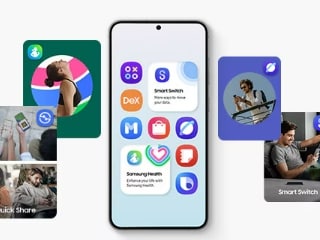- Home
- Internet
- Internet News
- Honeywell control systems vulnerable to cyber attacks: Researchers
Honeywell control systems vulnerable to cyber attacks: Researchers

The Niagara control system from Honeywell International Inc's Tridium division are configured to connect to the Internet by default, even though that is not necessary for them to function, two researchers from security firm CyLance said at a security conference in San Juan, Puerto Rico.
The pair, Billy Rios and Terry McCorkle, uncovered vulnerabilities last year that prompted the Department of Homeland Security to warn customers to change their settings and resulted in Honeywell releasing a software update that the two researchers previously said had successfully addressed the problems.
Yet they revealed on Tuesday they have since uncovered new flaws in Tridium's technology that continue to make customers vulnerable to attack via the Internet.
They showed they could take control of a Niagara system using a new piece of software they had written to demonstrate the vulnerabilities in the system.
They declined to explain their techniques out of concern that malicious hackers might try to copy their methods. They said attackers could accomplish the same ends by taking advantage of weak encryption and passwords stored internally on the Tridium control devices.
Once inside, hackers could wreak havoc with the physical environment and in many cases could also jump to a building's main office computers, McCorkle said.
"It's a little worrisome," McCorkle said. "Don't put it on the net."
A Honeywell spokesman said the company was working to address the new problems as quickly as possible and would alert customers of the risks.
"We appreciate the fact that Mr. Rios and Mr. McCorkle are continuously reminding the user community of these sorts of vulnerabilities and we share their interest in getting them fixed," said Honeywell spokesman Mark Hamel.
Department of Homeland Security spokesman Peter Boogaard declined to comment on the security of the Niagara technology.
Poor security in industrial control systems, including those that run manufacturing facilities and power plants, has become an intense focus for security researchers and hackers alike since 2010 when the Stuxnet virus surfaced.
Stuxnet attacked Iran's nuclear program, targeting centrifuges at a uranium enrichment facility running on widely used control systems from German conglomerate Siemens AG. It exploited previously unknown security flaws in Siemens technology.
Scores of security experts have since rushed to identify similar bugs in an effort to prevent malicious hackers from launching potentially devastating attacks on power systems, chemical plants, water utilities and other facilities that run on industrial control systems technology.
Internet access
In their presentation, the two researchers showed that some 21,000 Niagara systems used at hospitals and other facilities can currently be accessed via the public Internet, using a specialized search engine known as Shodan.
Many Niagara customers do not realize their systems are attached to the internet because they were originally installed by outside contractors, the two said.
Building operators typically control Niagara systems directly from inside the facilities they control, with Internet access surviving as a back-up, they said.
Experts in industrial control systems security compare the problems to those in the early days of Microsoft Corp's Windows software for PCs. But they warn it will be harder to fix the bugs because equipment often remains in place for decades and some manufacturers have no easy way to get security improvements to their customers.
Rios said they notified Tridium of their most recent findings and that the division hoped to have a fix available to customers of the current version of Niagara within a week, with fixes for older versions coming later.
A spokeswoman for Tridium said she could not immediately comment on the findings from Rios and McCorkle.
© Thomson Reuters 2013
Get your daily dose of tech news, reviews, and insights, in under 80 characters on Gadgets 360 Turbo. Connect with fellow tech lovers on our Forum. Follow us on X, Facebook, WhatsApp, Threads and Google News for instant updates. Catch all the action on our YouTube channel.
Related Stories
- Samsung Galaxy Unpacked 2025
- ChatGPT
- Redmi Note 14 Pro+
- iPhone 16
- Apple Vision Pro
- Oneplus 12
- OnePlus Nord CE 3 Lite 5G
- iPhone 13
- Xiaomi 14 Pro
- Oppo Find N3
- Tecno Spark Go (2023)
- Realme V30
- Best Phones Under 25000
- Samsung Galaxy S24 Series
- Cryptocurrency
- iQoo 12
- Samsung Galaxy S24 Ultra
- Giottus
- Samsung Galaxy Z Flip 5
- Apple 'Scary Fast'
- Housefull 5
- GoPro Hero 12 Black Review
- Invincible Season 2
- JioGlass
- HD Ready TV
- Laptop Under 50000
- Smartwatch Under 10000
- Latest Mobile Phones
- Compare Phones
- Jolla Phone
- Realme P4x 5G
- OnePlus Ace 6T
- Nubia Flip 3
- Nubia Fold
- OPPO A6x 5G
- Samsung Galaxy Z TriFold
- Poco F8 Ultra
- Asus ProArt P16
- MacBook Pro 14-inch (M5, 2025)
- OnePlus Pad Go 2
- Poco Pad M1
- Just Corseca Skywatch Pro
- Honor Watch X5
- Acerpure Nitro Z Series 100-inch QLED TV
- Samsung 43 Inch LED Ultra HD (4K) Smart TV (UA43UE81AFULXL)
- Asus ROG Ally
- Nintendo Switch Lite
- Haier 1.6 Ton 5 Star Inverter Split AC (HSU19G-MZAID5BN-INV)
- Haier 1.6 Ton 5 Star Inverter Split AC (HSU19G-MZAIM5BN-INV)

















